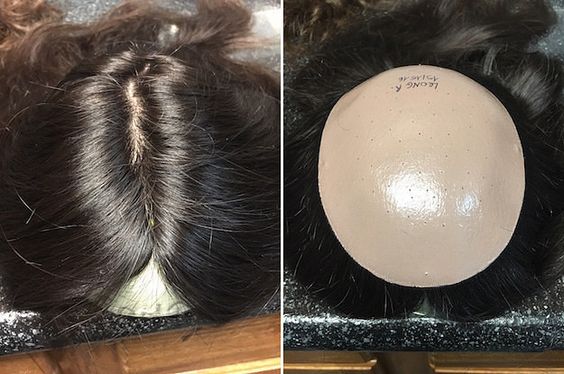3D Hairpieces: Game-changers of the Century
Chemotherapy and the resulting hair loss (alopecia) can be quite difficult to deal with. Many chemotherapy patients choose to cover their heads until their hair grows back, which can take a very long time. While wigs often look like the best option, since they simulate the appearance of real hair, they can get very expensive—especially when made of human hair rather than synthetic. They can also be fussy, ill-fitting, uncomfortable, and add the difficulty of stuffing lots of hair into a small wig cap. Fortunately, there are other options: bandanas, headscarves, or the newest kid on the block, 3D hairpieces. 3D hair is commonly made for and used by chemotherapy patients, although people with any type of hair loss can benefit from this realistic printed hair.
While 3D printing normally produces hard plastic objects, it can be manipulated to produce thin strands of plastic that function as hair. If you’ve ever used a glue gun, you may already know how: when you finish gluing something and try to pull the gun away, you’ll usually end up with a thin string of glue that is stubborn and won’t want to separate. 3D printing uses that principle—called “furbrication” by Carnegie Mellon PhD student Gierad Laput, who discovered the phenomenon—to create a series of strands that look very realistic. Now, entire heads of hair can be recreated through 3D printing.
The first thing to note is that a 3D hairpiece is not a wig: it’s a prosthetic. Each hairpiece is specifically tailored to fit the customer, with scalp measurements, scalp color, hair texture, and other factors taken into consideration. Danielle Grillo, the mastermind behind it all, is constantly innovating at Transitions Hair Solutions in New Jersey. “[3D printed hair]’s considered a scalp and hair prosthetic because it can be used for any kind of hair loss,” Grillo said in a Today.com article, “related to chemotherapy, a scalp disorder, burn, autoimmune disorder, and because it can be made into whatever size is needed.”
One downside is that 3D hairpieces are expensive since the technology behind them is relatively new. That said, the ability of 3D hair to be personalized to each person’s scalp makes it as comfortable as it is realistic, putting it leagues ahead of any other type of hair covering. Also, you don’t need to put it on and take it off every day, and you can do anything you want while wearing it—including showering!
Things are advancing in the 3D hair arena, and quickly, with companies like Disney jumping on board and adding hair to figurines. While hair on figurines can’t exactly help cancer survivors or other people suffering from alopecia, it, at least, denotes progress for 3D hair on the whole. And 3D hair salons are not just limited to Transition Hair Salons… many stylists and hair loss centers have begun working with this new medium, as well. And thanks to them all, hair loss sufferers will no longer have to suffer the many difficulties of wigs.
A video showing the 3D printed hair process:
A video about 3D printed hair:
© 2016 by BaldTalk.com, an LiVenture.
All rights reserved. No part of this document may be reproduced or transmitted in any form or by any means,
electronic, mechanical, photocopying, recording, or otherwise, without prior written permission of LiVentures.

